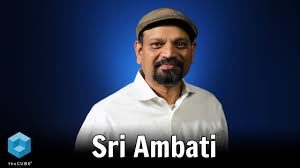Gareth Coltman, global head of automation at MarketAxess, the electronic platform for fixed income trading and reporting, said the industry is going through a second revolution which will lead to radical changes in market structure.

Coltman told Markets Media: “The first revolution in electronic trading involved automating request for quotes and Open Trading. We are seeing the second revolution in electronic trading which has been enabled by the pre-trade data provided by CP+ and will lead to radical changes in market structure.”
Open Trading, MarketAxess’ all-to-all trading protocol, allows multiple parties in a network to come together to trade, rather than the traditional model of only banks supplying liquidity to the buy side.
Composite+ (CP+)
CP+ is the firm’s algorithmic pricing engine that uses artificial intelligence to price corporate bonds using a variety of data sources including public reports and proprietary MarketAxess data.
David Krein, global head of research at MarketAxess, told Markets Media that the firm experimented with machine learning for 18 months before the launch of CP+ in May 2017, and found it clearly made better sense of the data.
“After searching for tools to speed up and improve our process, we decided to use H20.ai to implement the necessary algorithms,” he added.
H2O.ai said in a statement last month that its platform provides open source artificial intelligence and machine learning capabilities to MarketAxess’ CP+.
The pricing engine’s algorithm consumes more than 200 features and produces an unbiased, two-sided market for 95% of the tradable universe which is updated every 15 to 60 seconds, depending on the liquidity of the instrument.
“The predicted prices of CP+ track traded levels very closely, and we aim for zero average difference between the two,” said Krein. “A real-time accurate pre-trade reference price for corporate bonds has not been available before.”
Sri Ambati, chief executive and founder at H2O.ai, told Markets Media that the firm’s open source platform can perform one billion regressions in less than five seconds.

“This ensures data is correct in rapidly changing markets, which is very powerful when combined with MarketAxess’s domain knowledge in fixed income,” said Ambati.
The technology provider also has a H2O Driverless AI platform which uses automation to accomplish tasks including model validation, model selection and deployment and machine learning interpretability much more quickly.
Ambati explained that testing algorithms automatically allows firms to “fail faster.” He added: “By testing with more rapid iterations the right strategy can be found more quickly.”
Krein continued that artificial intelligence has been used in CP+ for euro bonds and emerging markets globally.
“We have already extended the facility into eight local emerging markets, where data is hardest to come by, making a pricing tool such as CP+ that much more valuable,” he added.
Electronic trading
In the US, the outperformance of electronic trading can be evidenced by comparing venue transactions to Trace, the reporting system.

Krein said: “In other markets, we have used CP+ as a benchmark as well and we can now observe, measure, and track the same results.”
MarketAxess has constructed trade performance indexes against Trace as a benchmark. The MarketAxess U.S. Investment Grade Trading Performance Indexes give a view of the relative “over-performance” or “under-performance” associated with venue selection.
When the indexes were launched in April last year MarketAxess said in a statement that participants had an estimated improvement of 0.9 basis points in yield per bond in March 2019 when trading US Investment Grade credit on the MarketAxess platform versus trading away.
“We will be rolling it out to other markets in the coming months,” Krein added.
Automation
Coltman said: “Fixed income currently has automation of traditional RFQs but new tools and protocols are emerging which will impact all trading activity.”
For example, MarketAxess launched Live Markets for new issues and portfolio trading six months ago. Live Markets is a protocol for Open Trading which creates a single view of two-way, actionable prices for the most active bonds. In addition, executing in Live Markets gives evidence of best execution as the platform provides details of the quotes in the market at that point in time.
Coltman continued that transactions are ripe for automation and adoption will soon become ubiquitous in fixed income.
“We only launched automated execution two years ago and already between 50% and 60% of activity for some of our biggest clients is auto-executed,” he added. “The industry does not realise how fast this is happening.”
AI in financial services
Ambani said: “We are in the earliest days of the AI era in financial services.”
In December last year Credit Suisse selected H2O.ai as a member of its 2019 Disruptive Technology Recognition Program. The scheme is a joint initiative between the bank’s investment banking and capital markets division and the group chief technology officer function.
Ambati said: “H2O.ai was honored to be selected into the coveted Credit Suisse’s DTR program to partner across every group within the bank and co-invent AI.”
The partnership with the bank began when Credit Suisse adopted H2O Open Source in core finance and banking. Subsequently in 2019 the bank chose H2O Driverless AI to accelerate AI adoption in front-office and back-office in global markets, fixed income and capital markets.
In August last year another bank, Goldman Sachs, led a $72.5m series D ending in H2O.ai alongside the Ping An Global Voyager Fund, which took total funding to $147m. Jade Mandel from Goldman Sachs joined the H2O.ai board.
Erdit Hoxha, head of European equity trading at Goldman Sachs Securities Division, said in a statement at the time: “The results we’ve got with H2O are promising, we are now looking at wider adoption of the AI models across the equity trading floor for market making.”
Ambati continued that H2O.ai was founded in 2012 with the aim of democratizing AI for everyone.
“We want to provide signal sharing as a service and intelligence as a service,” he added. “The democratization of technology and talent will transform the whole capital markets industry and lead to more transparency and easier access to capital.”

